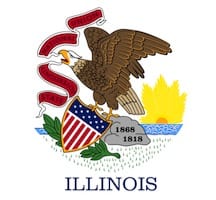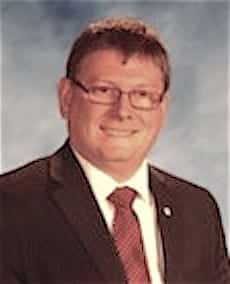https://vimeo.com/218175940
Personalized learning for students is the present and the future in education
 Personalized learning is a focal point for Jeff Thake, superintendent at Amboy CUSD #272 in Illinois. He has been highly involved in the AASA School Superintendents Association since 2011 and has specifically contributed a great deal to the association through the AASA Personalized Learning Cohort.
Personalized learning is a focal point for Jeff Thake, superintendent at Amboy CUSD #272 in Illinois. He has been highly involved in the AASA School Superintendents Association since 2011 and has specifically contributed a great deal to the association through the AASA Personalized Learning Cohort.
Jeff’s activity within the professional organization and his relationship with colleagues has allowed him to introduce some exciting, progressive ideas into his district. Communicating about new programs and technologies with cutting-edge district leaders gives Jeff the ability to quickly present new apps and social media platforms to staff for implementation.
The forward thinking approach adopted by Amboy CUSD #272 has positioned the district as a hub of personalized learning. Since going one-to-one with Chromebooks in 2016, the positive changes in classroom learning environments have quickly become evident, resulting in an enthusiastic buy-in from both teachers and students.
Those within the school are not just embracing changes; community leaders are getting on board. As Jeff puts it, “We bring our community leaders in just to see some of the changes we’ve made. And our community leaders are absolutely floored when they leave the district.”
Jeff is a shining example of a superintendent who is taking the lead on moving his district from 20th-century learning concepts into future oriented 21st-century models. It’s certainly an exciting time for Jim and Amboy CUSD #272district.
Interview
Dr. Berger: Jeff, it’s really nice to spend some time with you today. I will tell you that I have been speaking with lots of superintendents over the past few months, and I continue to be surprised by the change in the personalities that are leading our district in a very positive way. I’m finding that the superintendents of today ─ 2017 ─ are very different in personality, disposition, and their approach to leadership than they were when you and I were growing up.
What have you seen not only from your own personal experience but within contemporaries around the U.S.?
Jeffrey Thake: I’ve had the privilege of being accepted into the AASA personalized learning cohort as well as the digital consortium. I was one of the first in the country to earn a national superintendent certification in 2015. I’ve introduced many concepts that I’ve seen from many cutting-edge school districts, and I just simply introduced them.
 What’s happened is that my teachers and my staff have taken these concepts and ran with them faster than I ever could have imagined. We’re at a point right now where we’re really becoming progressive. And with the personalized learning vision that we have, our students are the ones who are telling the story now.
What’s happened is that my teachers and my staff have taken these concepts and ran with them faster than I ever could have imagined. We’re at a point right now where we’re really becoming progressive. And with the personalized learning vision that we have, our students are the ones who are telling the story now.
What we need to do is that every voice at the table needs to be treated with equal importance. And we’ve really embraced that here in the Amboy School District.
The strength is in the numbers and when you have several people moving in the same direction to get from Point A to Point B, you’re going to be successful. I never could have dreamed how quickly we would advance from Point A to Point B.
We have not been a one-to-one school district ─ meaning, every single student has a Dell Chromebook 11. We were not one to one until August 16, 2016.
When we go into the classrooms right now, the transformation I’m seeing with the level of student engagement ─ you can see it and you can feel it. We’ve given many building tours. We bring our community leaders in just to see some of the changes that we’ve made. And our community leaders are absolutely floored when they leave the district.
DB: That’s exciting to hear especially when you get in the corporate community in that way. You said something that I think is really key when you talked about students and the ownership of learning and the way in which they are contributing to their own learning in that way.
I’m hearing about a lot of districts that are looking in a much more intentional way and manner in the ways in which we are documenting that learning ─ in meaningful ways ─ to incorporate communication opportunities among students, teachers, and the families at home and providing just a more accurate record of what they’re doing and how they’re learning in a way that’s engaging ─ and it’s not punitive ─ which is why, I think, a lot of folks are worried about it just even a few years ago.
How are you looking at it in your district when it comes to that feedback loop of what we’re learning, the ownership from the student side of it, and how we can support that information with the teachers and the parents?
 JT: There are several ways. Last spring was the birth of our Amboy Community Unit School District #272 Facebook page. I’m the administrator of that Facebook page.
JT: There are several ways. Last spring was the birth of our Amboy Community Unit School District #272 Facebook page. I’m the administrator of that Facebook page.
On my district cell phone, over 800 pictures have been posted on Facebook of the transformation that has taken place in the district and over two dozen videos of students talking about and reflecting on their learning.
There’s one thing you can tell somebody about it but when you show somebody what that transformation looks like, now, people can see it and people can gain a much greater understanding of where we were and where we are now.
I found out that a lot of our parents ─ not so much with students anymore ─ are on Facebook.
An example of using Facebook: I announced school was cancelled or we were dismissing early due to heat. In our district, we don’t have air conditioning in some of our buildings in the rural community. It spread so rapidly on Facebook. Before I even did the global connect, the entire community knew.
Instead of prohibiting social media, you need to embrace it. And we’re doing that.
We’ve redesigned our professional development. I’d like to talk a little bit about this. Our technology committee has teachers as well as students, parents, and administrators. They all sit on our technology committee.
It used to be where we would dismiss once a week at 11:30. We still do the once-a-week 11:30 but we have three different mini sessions where we’re actually personalizing professional development.
Just last month, we actually had students leading mini sessions on new apps and new technology that they’re integrating for class projects; and, now, we have students teaching teachers how to use the technology.
See, as adults, we’re afraid. We can’t be afraid that our students might be picking up concepts on technology faster than we are because that’s a given. Instead, let’s embrace that, too, and let’s incorporate that.
The autonomy that students feel that, now, their voice is being heard and that we’re listening to what they’re doing ─ it’s just amazing. They get excited about talking about their learning and they talk about it with their parents.
 There was one student who reflected on something we did. It was called the “Twenty-percent Project” where twenty percent of the week, sixth graders actually got to work on a project that they were very passionate about.
There was one student who reflected on something we did. It was called the “Twenty-percent Project” where twenty percent of the week, sixth graders actually got to work on a project that they were very passionate about.
There was one student who said that he was helping his father create a website. He went to several other websites but he was meticulous enough to find the website that didn’t cost anything. He created a website for his father and I said, “So what’s the thing you like the most about this?” He said, “I get excited about coming to school now. I really get excited. I get to work on something that I really like.”
And when you hear students speaking that way, it is so profound. And then, their parents, of course, see how excited their kids are at coming to school and they want know, “What is going on there?”
We were in traditional classrooms last year. In a traditional classroom, you have a third of the class who have mastered the concepts already but they’re kind of bored because the whole class can’t move on. You have another group that is the middle and you have a group that might be falling further behind.
We’ve transformed the traditional classroom in several ways. Number one, we have teachers using a simple program, Google Classroom. Students and parents have 24/7 access to what’s going on in the class. If a student is absent from school, “Hey, what did I miss yesterday?”
Those days are over.
The teachers are also using a program called “Screencastify.” Whatever the lesson objectives are, no more than five to seven minutes, the teacher will just do a quick video take. It could look like a slide where the teacher is writing on the slide or some teachers are literally videotaping themselves writing on the smart board or just typing into the smart board.
Either way, the students who could not get a grasp of the concepts quick enough can go back and rewind and watch it again and again.
One of our community leaders asked a sixth-grade math teacher who was in a traditional classroom last room and a self-paced classroom pilot this year, “Where were you with the scope and sequence of the curriculum last year versus this year?”
This was one month ago, mind you. And the teacher said, “Well, we are currently where our students last year in the traditional classroom left off on the last day of school.”
That’s how quickly students are learning and it’s not just the high fliers. It’s all students.
DB: And there’s excitement there when you can see that everybody’s involved.
Jeff, let’s talk a little bit about the younger grades. I’m finding that we are ─ correct me if I’m wrong ─ getting to be more discerning in our purchases with regards to education technology for the earlier grades whereas, a few years ago, it was often a blanket purchase that was really targeted towards middle or high school with some alterations to fit elementary.
But, now, it looks like districts are being a lot more thoughtful in their purchases knowing that the younger students want it, that that’s part of the world that they know, and that we can find really interesting technology that not only supports the learning but also the teachers’ assistance in that regard as well.
 JT: Yes. With the Dell 11 Chromebooks, there are so many apps that the teachers are using. And we’ve done a lot of research to our professional development on which apps would be most relevant.
JT: Yes. With the Dell 11 Chromebooks, there are so many apps that the teachers are using. And we’ve done a lot of research to our professional development on which apps would be most relevant.
In my district, we have one employee who used to be a business teacher and she teaches high school yearbook. Now, she teaches high school yearbook only. She used to be our curriculum and instruction director for technology. Now, we just call her the “I-coach.” She’s in classrooms everyday and she’s helping teachers with these different programs.
In some cases, we have students ─ even in the early elementary ─ who are saying, “Hey, I found this program.” And the teachers are incorporating it immediately into their instruction.
A lot of it might be students reviewing spelling or students reviewing math. They’re working at their own pace. They’re able to read. What students like to do is when they finish their work, they get to read a little bit more; in which case, they’re going to make their reading goals.
When we see this happening and we see students reading more, when we see the teachers who are using more technology ─ there’s this huge database called “Symbaloo” that our teachers are using. I can’t speak enough about how amazing the transformation is.
When you see five-year-olds who are completely engaged in their lesson ─ they have ear buds in; they’re listening to the lesson ─ and then, they’re getting on the keyboard where keyboarding skills are pretty important for the younger grades, and then they start working that way, just seeing it and witnessing it is just an incredible thing.
DB: Did you think your job would be this exciting when you first started?
JT: Wow! Not this exciting. What we’ve done in the short amount of time in which we’ve done it ─ we still have a long way to go. Don’t get me wrong. But I never would have imagined after we became one to one on August 16 that we would be where we are now.
Our staff is like “Let’s keep going!” Part of me wants to say, “Let’s take a step back and look how far we came from.”
DB: Let’s take a drink of water.
JT: Yes. But that’s what I like about this. We are just so driven. We’re like, “Okay, we love what’s happening but we need to do more.” That, right there, is the mindset.
 That’s the number one difference between 20th-century education and 21st-century education. It’s not necessarily skill set. It’s attitude and it’s mindset because if you have somebody with the right attitude and the right mindset, they’re going to pick up these concepts; they’re going to be able to go in; and they’re going to be able to adapt and adjust faster than anybody can.
That’s the number one difference between 20th-century education and 21st-century education. It’s not necessarily skill set. It’s attitude and it’s mindset because if you have somebody with the right attitude and the right mindset, they’re going to pick up these concepts; they’re going to be able to go in; and they’re going to be able to adapt and adjust faster than anybody can.
That’s what I’ve learned and that’s what we’ve learned as a district.
DB: The district is lucky to have you. The energy is infectious. I know the audience can pick up on that. And it’s important that our leaders have that. I think it’s engaging. It helps to support the educator and the students as well and their families.
So continued success, Jeff! We really appreciate it.
JT: Thank you very much.
About Jeff Thake
 Jeffrey Thake has been superintendent at Amboy CUSD #272 since 2011. Prior to that, he was a principal, in the district from 2006 – 2011 and an associate principal at Sterling Public Schools #5 from 2004 – 2006. He is currently finishing his dissertation to earn an EdD, Education Leadership and Administration at Aurora University. He previously earned a Bachelor’s of Music, Music Education, from Southern Illinois University, Carbondale.
Jeffrey Thake has been superintendent at Amboy CUSD #272 since 2011. Prior to that, he was a principal, in the district from 2006 – 2011 and an associate principal at Sterling Public Schools #5 from 2004 – 2006. He is currently finishing his dissertation to earn an EdD, Education Leadership and Administration at Aurora University. He previously earned a Bachelor’s of Music, Music Education, from Southern Illinois University, Carbondale.
Jeff’s responsibilities as superintendent include budgeting, grant writing, contract negotiations, instructional leadership, human resources leadership including evaluation of staff. He is an Attack Countermeasures Certified Instructor.
Jeff was a member 2013 Inaugural AASA National Superintendent Certification Cohort. Additionally, he has been elected to represent the Illinois Association of School Administrators Northwest Division on the advisory committee for the Illinois State Board of Education. He was accepted into the AASA Digital Consortium, the AASA Personalized Learning Cohort, the AASA Redefining Ready Cohort and he was recently elected to the AASA Governing Board.
Follow Jeff Thake on Twitter
This article was originally published in the Huffington Post
AuthorDr. Berger is one of many industry education correspondents for the Mind Rocket Media Group, An educator and former school administrator. His video interview work and conversational podcasts have been featured in various media outlets. He often hosts education panel discussions and develops strategic content. As an academic Dr. Berger is a guest lecturer at Vanderbilt University’s Owen Graduate School of Management. A former assistant principal, he has been an adjunct undergraduate professor and developer of online college courses. He is a passionate Detroit sports fan who has also adopted Nashville sports teams as his own.
Contact the Mind Rocket Media Group if you are interested in an industry interview and a placement on EdCircuit.
Further Reading
- EdWeek – ‘Toolkit’ Breaks Down K-12 Districts’ Shifts Into Competency-Based Learning
- Benzinga – Apple’s iPads Are Now The Tablet Of Choice Among Kindergartners
- Inside Higher Ed – Facebook, an Online Learning Platform?
